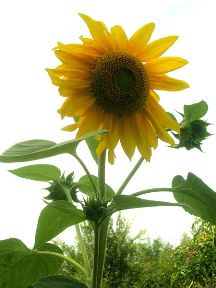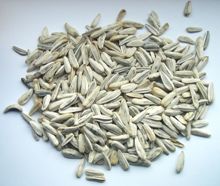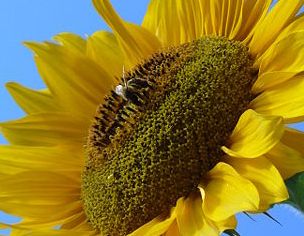hanging out with friends...or enemies

The sunflower has showy ray petals which attract birds
and butterflies, although the sunflower can be harmed by birds because
the seeds are exposed and they are able to perch on the large head of
the sunflower.
Helianthus annuus has a mutualistic relationship with mycorrhizae, this relationship between a plant and fungus can be seen in 95% of plants. The sunflower benefits by an increase in biomass as well as increased access to phosphorous, water, nitrogen and other immobile nutrients. On the other hand, the mycorrhizae receives sugars produced by the plant.
The sunflowers share a predatory relationship with
weeds because they cause the crop to be reduced by competing for
moisture, nutrients and light.
On the other hand they share a mutualistic relationship with bees
because the flower gains transport of pollen while the bee gains an
abundance of nectar.
Helianthus annuus includes a number of insect pests, including: Midge, Head Moth, Beetle, Maggot, Head Clipper Weevil, Stem Weevil Complex. Along with pests comes disease, which includes: Downy Mildew, Rust, Sclerotinia Stalk and Head Rot, Vericillium Wilt. Although there has been some resistance to disease shown when Helianthus annuus is hybridized with Helianthus tuberosus (Jerusalem artichoke).
Within the food web, Helianthus annuus falls as a primary producer. It is an autotroph which produces its own food via photosynthesis. It is the first trophic level within the web, because it supports the other levels.
 The sunflower has become valuable to humans as a
commercially cut flower, used for cooking oil and the edible seeds are
used as snacks, and also used in birdseed and cattle feed.
The hulls of the sunflower seeds have been used to make logs for
fuel, alcohol, as well as bedding for animals.
The sunflower has become valuable to humans as a
commercially cut flower, used for cooking oil and the edible seeds are
used as snacks, and also used in birdseed and cattle feed.
The hulls of the sunflower seeds have been used to make logs for
fuel, alcohol, as well as bedding for animals.
